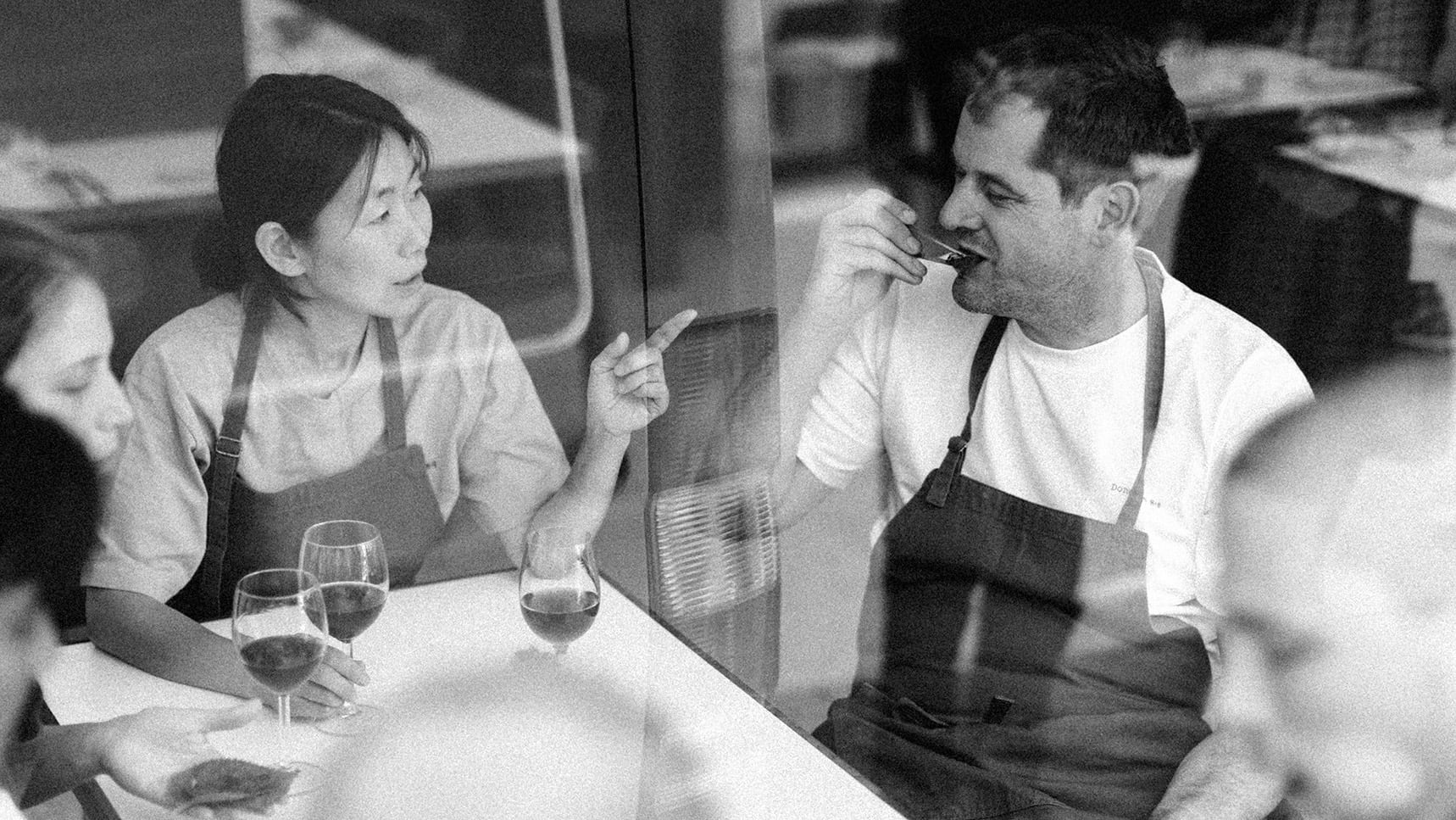Tesco might stock gochujang these days, but Britain’s grasp of Korean cuisine remains superficial at best. Dongnae’s menu proves the point. The food is exceptional, but will be largely unfamiliar to anyone that hasn’t been to Korea or to one of the handful of authentic Korean restaurants in London.
Launched by chefs Kyu Jeong Jeon and Duncan Robertson just over a year ago in Bristol’s Redland suburb following the success of their more casual debut Bokman, Dongnae applies Korean cooking techniques to top quality British ingredients. The setting and service style is stripped back and casual, especially when contrasted with the quality of the cooking.
As such, Dongnae’s setup and attitude is comparable to London’s new wave Thai restaurants like Kiln, Singburi and Plaza Khao Gaeng but, as Robertson explains, the pair are working with a cuisine that is far less established and understood on these shores.
“I don’t want to sound big headed but we are ahead of the curve in a lot of ways. We were the first to delve deeper into Korean food in Bristol and probably London too.”
“Dongnae is first and foremost a barbecue restaurant, but one that goes beyond the sweet-and-spicy marinades people often associate with Korean BBQ in the UK,” adds the Seoul-born Jeong Jeon.
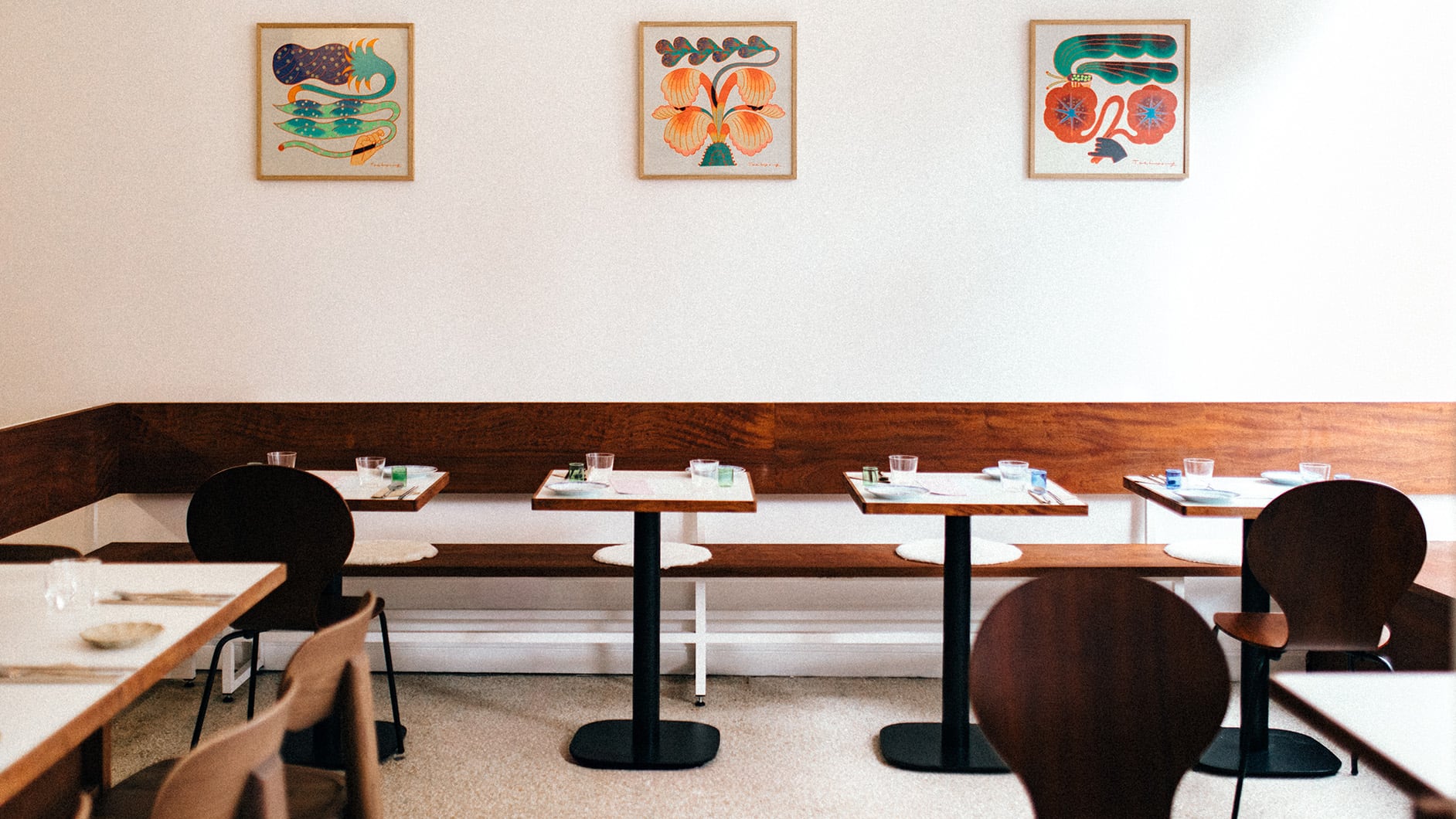
All wrapped up
The main event at Dongnae is ssam, which literally means ‘wrap’ in Korean. It refers to a style of eating rather than a specific dish and sees barbecued ingredients (typically but not always meat) served alongside salad and other leafy greens for wrapping and an array of accompaniments including kimchi and ssamjang, a spicy-savoury paste made from doenjang (fermented soy bean paste) and gochujang (another key Korean ingredient made by fermenting chillies and glutinous rice).
Grilled ingredients for what is essentially the restaurant’s main course offering range from premium options like Japanese wagyu strip loin and ex-dairy ribeye through to more cost-effective yet still carefully sourced items including marinated pork collar and Cornish mackerel.
The rest of the menu is made up of small plates including octopus and lamb fat kkochi (skewer); chicken and crab naengchae (cold salad), chanterelles and hot mustard alongside a few more familiar items like tuna belly hand roll with wasabi and a life-changing deep-fried chicken that’s brushed with a chilli seed glaze before being finished on the barbecue.
There are also a handful of larger non barbecue plates including a mushroom sotbap (topped rice served in a pot) with egg yolk and perilla seed oil; and chilled kongguksu (wheat flour noodles) bathed in iced pine nut milk.
Robertson admits that the latter dish especially can be a tough sell. “We don’t sell a lot of it but we love it. There are a few things that haven’t worked but in general we find people to be receptive to trying new things. Sometimes it’s just a matter of persevering.”
He recalls when they first put sea urchin on the menu and ended up throwing most of it in the bin. “We now struggle to keep it on the menu.”
While the menu is an important tool, it is the staff that do most of the heavy lifting. The duo try and keep one Korean word on each dish ‘because it sounds nice’, but say they always have to explain what the word means.
“The main thing is that the staff are clued up, and they certainly are here,” says Jeong Jeon. “We try to guide people gently, without over-explaining or making it feel like homework.”
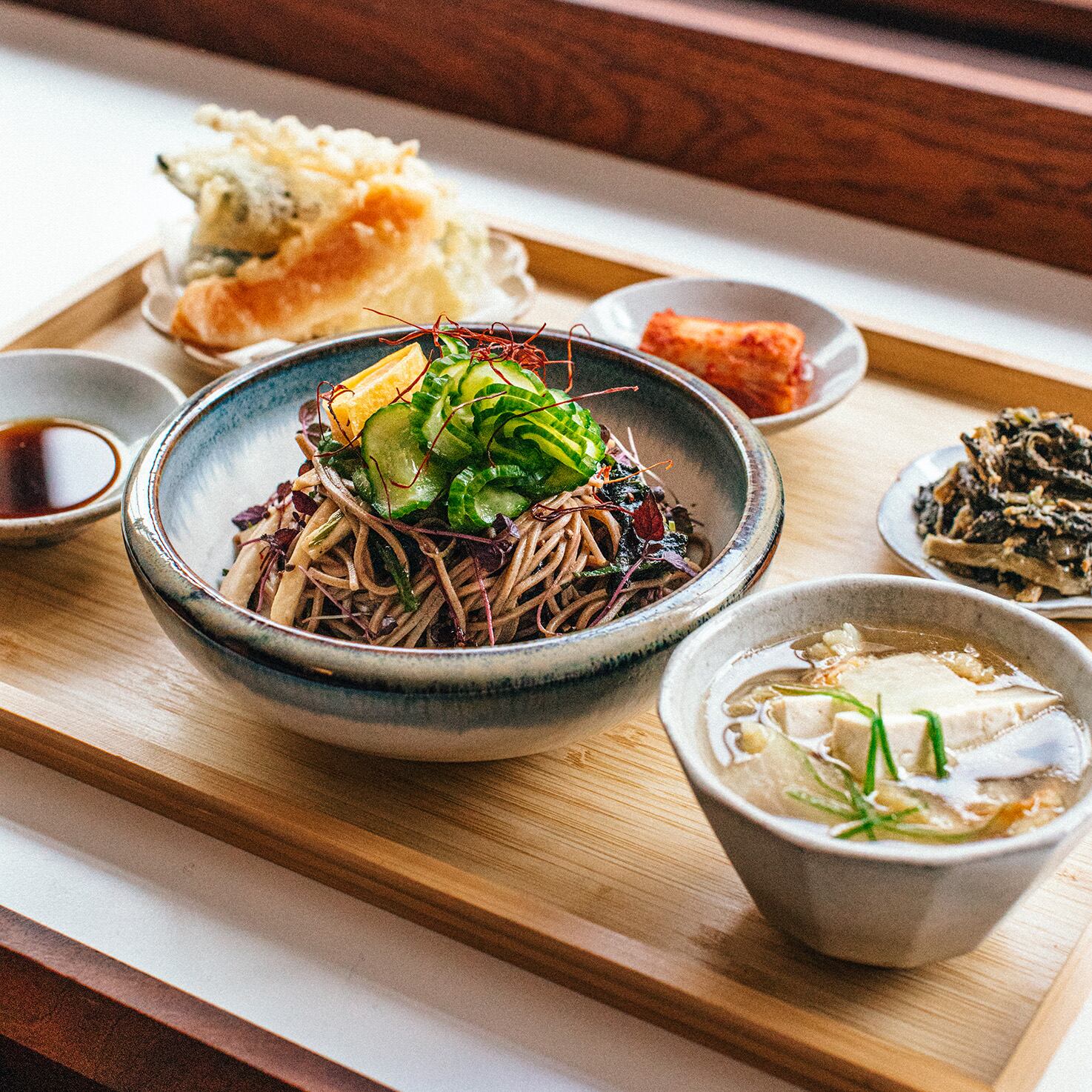
Since the restaurant launched in September last year, the pair have been grappling with chopstick etiquette. In China and Japan, rice is eaten with chopsticks, and using a spoon is generally considered poor form. Korea is different: rice is traditionally eaten with a spoon, not chopsticks. As such, Korean chopsticks are thin and metal-tipped, making it extremely difficult to pick up individual grains.
“I cringe every time I see someone trying, but it’s understandable, nearly everyone does it,” Robertson says. “It’s hard to correct people without sounding patronising, though we do step in when we see diners really struggling. Maybe we should just put it on the menu.”
The food at Dongnae is largely cooked by westerners with the obvious exception of Jeong Jeon. The team is strong - the closure of a number of top Bristol restaurants including Paco Tapas has helped swell the ranks - but the pair are looking for a Korean chef to help oversee their group as either an executive chef or a development chef.
“We have some great chefs in the kitchen but it would really help to have more people in the kitchen that grew up with the flavours,” Jeong Jeon says.
The pair are able to source most of the things they need to produce authentic Korean food but some items - including perilla leaves, certain vegetables and good quality dried anchovies - are harder to find consistently. “We sometimes have to be creative, either by importing directly, working with Korean suppliers here, or finding local substitutes that still give the right effect,” Jeong Jeon says.
Though they do have to buy some things in due to the high volumes they get through, the pair also try and make as many of the pastes and condiments that are the building blocks of Korean cooking as possible. For example, they make their own meju - blocks of fermented soybeans - and use them to make their own doenjang and ganjang (Korean soy sauce).
“These aren’t quick processes,” Jeong Jeon explains. “Once you’ve made the meju, fermentation continues slowly, sometimes for years. It’s labour-intensive and requires patience, but the payoff is a depth of flavour you can’t buy off the shelf. Since the very beginning of Bokman, we’ve been making these ferments, and now we have our own seven-year-old ganjang and doenjang. They’ve developed with us, and they form a kind of living thread through everything we cook.”
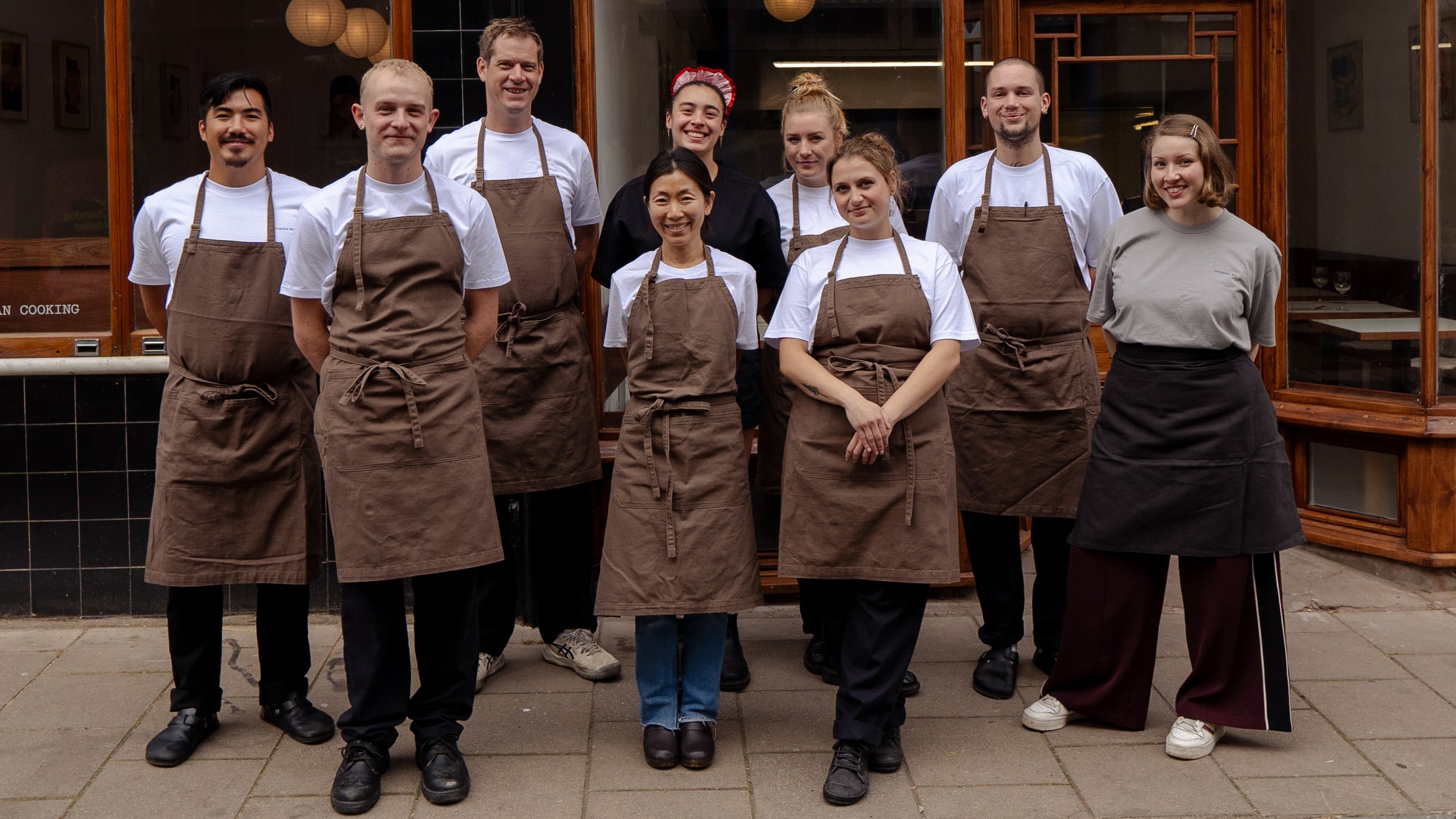
Adapting to suit the UK market
Dongnae may be one of the UK’s most authentic Korean restaurants and takes some of its cues from the contemporary bistros that have sprung up in the South Korean capital over the past decade or so, but it’s far from being a facsimile of a restaurant in Jeong Jeon’s home country.
“In Korea, restaurants tend to be much more specialist,” she says. “A place might only serve noodle soup, or grilled fish, or dumplings, and they’ll do that one thing incredibly well. Dongnae is more of an interpretation – a way of bringing together different aspects of Korean food culture in one space, partly because diners in the UK are still quite new to the cuisine.”
The pair didn’t initially want to offer any sort of set menu but ended up launching with one to drive up average spend and make ordering easier. “It’s not a very Korean way of eating,” Robertson explains. “There is obviously a bit of that in very high-end places in Korea but rarely in restaurants serving traditional food”.
In a bid to make the Dongnae experience more authentic, the first iteration of the set menu was sent out in waves of complementary dishes to mimic the communal way food is served in Korea and, indeed, most other Asian countries. But with the menu taken by around 40% of dinner guests, this approach put a big strain on both the kitchen and Dongnae’s servers, who struggled to fit it all on the table.
The pair have now arrived at something more akin to a western tasting menu concept with most dishes - with the exception of the main ssam course - arriving unaccompanied.
“The structure is difficult because the way people eat in Korea is so different to the way people eat in the West. For example, in Korea it’s unusual for two people to dine together - people nearly always visit restaurants in large family groups and that, obviously, affects how things are served.”
“It’s a case of picking your battles when it comes to authenticity. Sometimes you have to adapt,” Robertson adds.
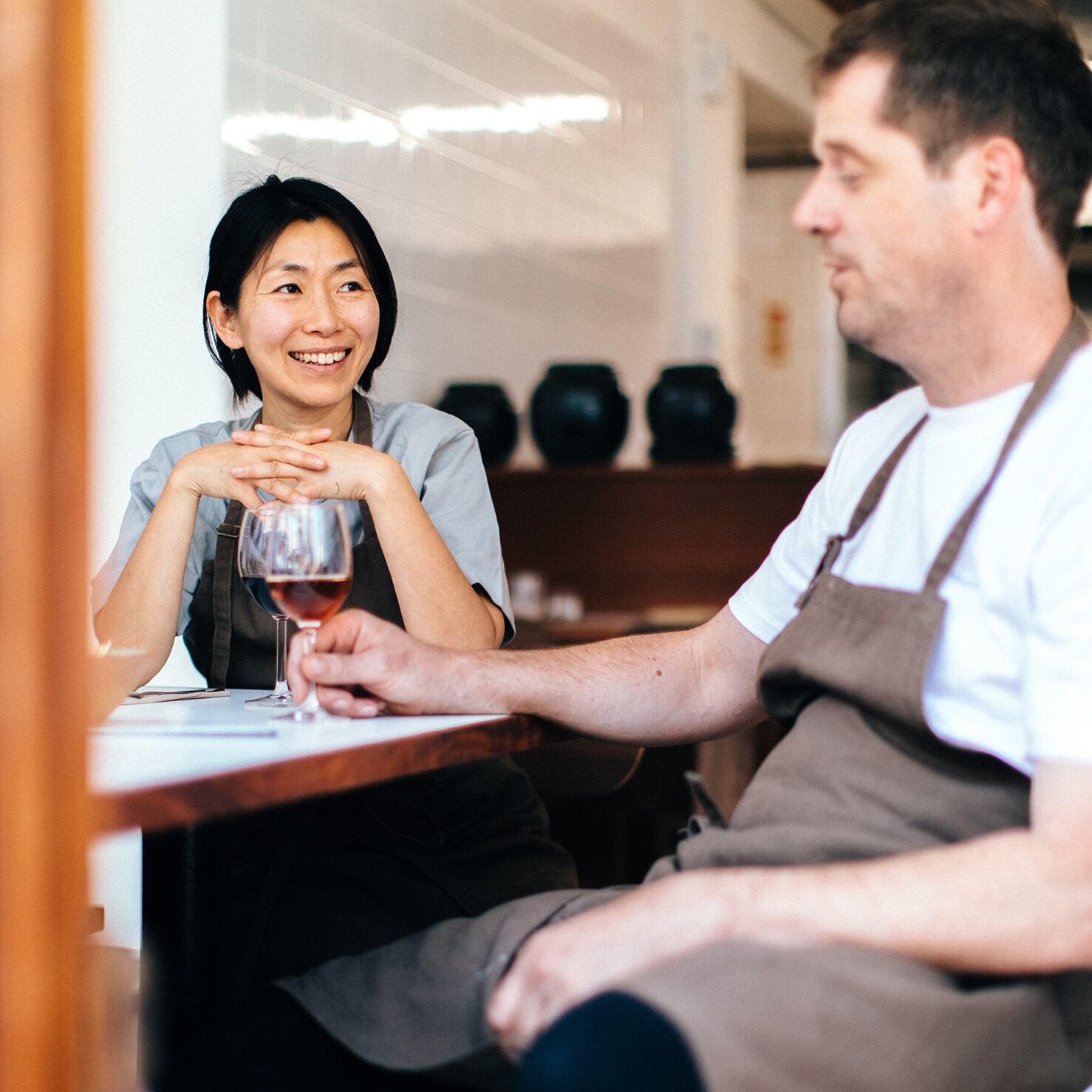
Bringing Asian-influenced fine dining to rural France
Jeong Jeon and Robertson met working for Joël Robuchon in Paris and not long after launched a hotel restaurant in southwestern France which attracted a Michelin star with its Asia-influenced food.
“I had worked at Nobu in London so it was more Japanese influence than Korean,” says Robertson, whose cooking CV also includes a spell at The Capital Hotel under Éric Chavot. “It was extremely hard. At the time, that sort of food wasn’t really a thing in Paris let alone rural France. We got a lot of grief from more traditionally minded people.”
After spending a decade or so in Jeong Jeon’s native Korea the couple returned to the UK to launch Bokman a little ahead of the pandemic. Specialising in grilled baby chickens stuffed with rice, the restaurant has been a big hit (it recently attracted a rave review from Observer critic Jay Rayner) but is having a tough time of it following national insurance contributions and minimum wage increases last year.
“We’re busy but we’re struggling to keep it profitable because the government has got rid of our headroom. We have been neglecting it a bit because we have been focused on Dongnae. The solution is to change the staffing structure a bit.”
Things are a bit better at Dongnae but turning a profit hasn’t been easy despite the restaurant being one of the hottest tickets in town. It is already on Restaurant’s list of the top 100 places to eat in the UK, ranked 46, no less, and was also shortlisted for opening of the year.
“In some ways we couldn’t have asked for more. We’re fully booked most nights apart from the five o’clock sitting. We do about 65 covers on a busy night which means turning most of our tables twice. But we have lost money every single month Dongnae has been open with the exception of this month.”
Part of the problem, Robertson acknowledges, is that the pair are putting nearly all of their energy into the food. “We’re cooks that work full time in the kitchen,” he continues. “We’re not really business people.”
Low uptake of Dongnae’s exceptionally good value lunch menu - £24 for a tray that includes a soup, two banchan (the Korean word for small side dishes served with a meal), vegetable tempura and a choice of main including two ssam options - is also hampering profitability.
“While some of the other restaurants around here have nailed lunch Redland isn’t a lunchtime place really,” Robertson says. “We’ll stick at it though, we’re all here prepping anyway so it makes sense to open.”
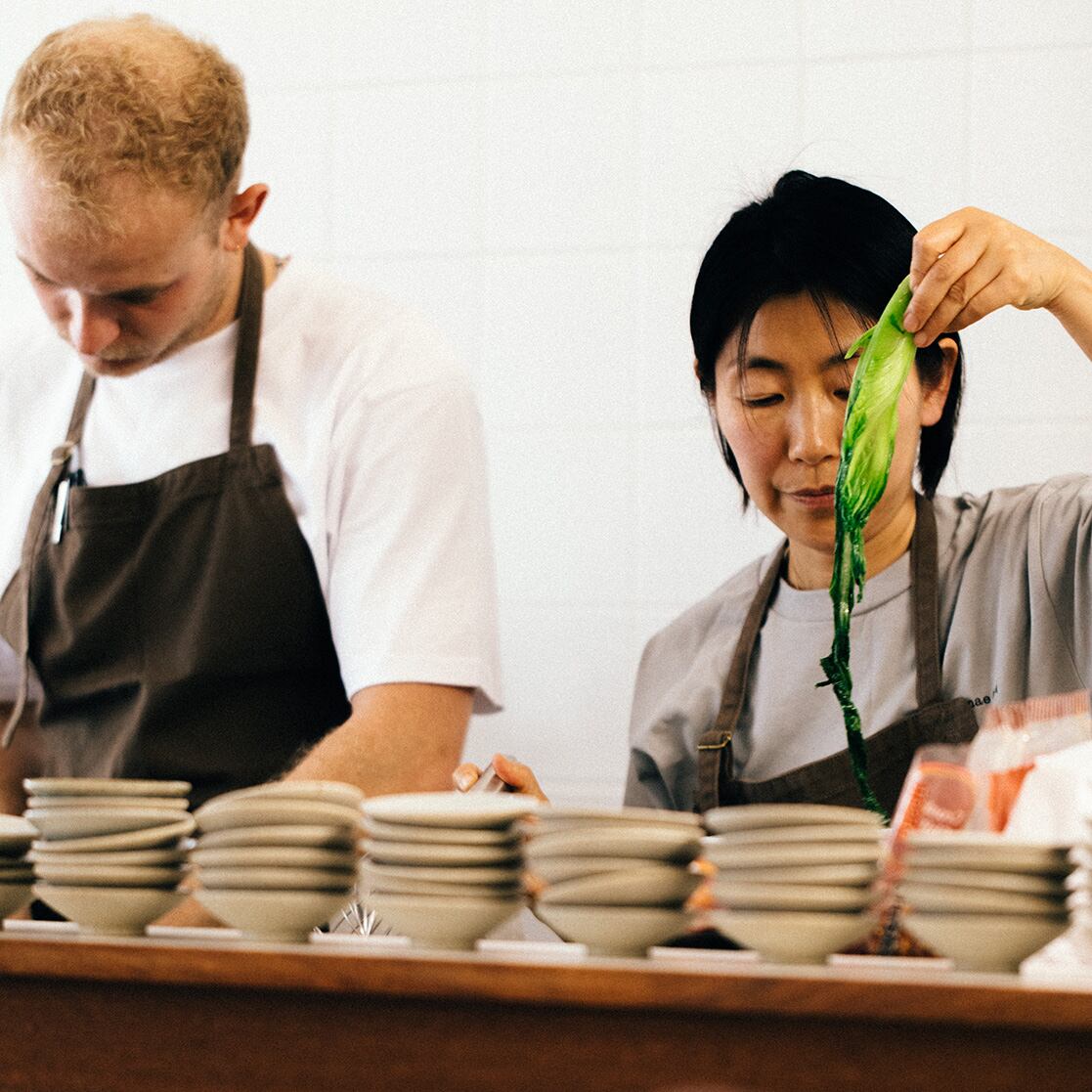
Bristol’s next Michelin-starred restaurant?
Though Redland is still an unlikely location for such a singular and unfamiliar Korean restaurant, the suburb (and north Bristol more generally) is a hotspot for top restaurants with Jan Ostle’s recently Michelin-starred progressive farm-to-table restaurant on the same stretch of Chandos Road and Bulrush - the city’s other Michelin-starred restaurant - only about ten minutes’ walk away.
While Dongnae isn’t perhaps an obvious candidate for that sort of recognition from the little red book it seems that Robertson and Jeong Jeon haven’t quite left that world behind.
“I wouldn’t say we were chasing it like we were back in France but I don’t think we’re a million miles off. We’re using amazing produce, we’re exacting in the kitchen and the service is great. We’re encouraged by places like Brat which are serving incredible food without being fancy. We probably just need to be a bit more consistent, but we’re getting there.”


